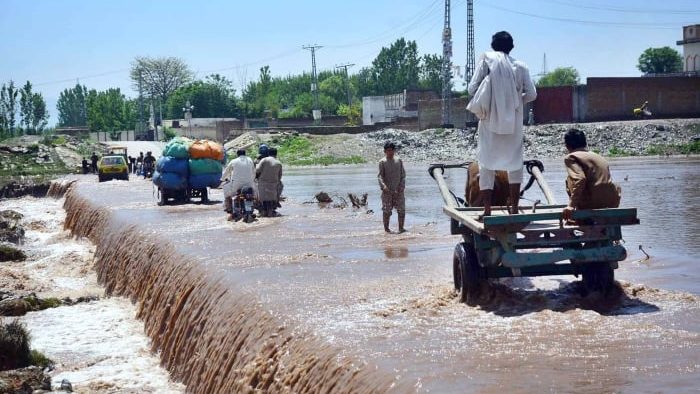Unusually intense April rains claimed at least 143 lives

Officials reported on Tuesday that about twice as much rain fell on Pakistan in April as normal, resulting in at least 143 deaths from lightning strikes and other storm-related occurrences.
April brought landslides, flash floods, and bad weather that devastated crops in some places and collapsed buildings in others.
According to Zaheer Ahmad Babar, a spokesman for the Pakistan Meteorological Department, Pakistan had a “increase of 164 per cent above the normal levels of rainfall in April, which is very unusual”.
“We’ve observed these erratic weather patterns as a direct result of climate change,” he stated to AFP.
Pakistan is becoming more and more susceptible to erratic weather patterns and the sometimes catastrophic monsoon rains, which typically come in July.
In Khyber-Pakhtunkhwa, where over 3,500 homes have been destroyed and 83 people, including 38 children, have perished, the highest death toll for April is recorded.
The province’s disaster management authority official, Anwar Shahzad, told AFP that “the fatalities resulted from roof collapse and landslide incidents.”
Hailstorms destroyed wheat harvests, a major grain, in certain northern districts of Punjab.
Overall weather patterns have changed by “about a month and a half, and we should shift our calendars for the agriculture sector accordingly to avoid damages caused by unprecedented rainfall,” environmental specialist Maryam Shabbir Abbasi told AFP.
Authorities reported earlier this month that 21 people had died in various rain-related accidents, and that lightning had killed numerous individuals in Punjab, including farmers harvesting wheat.
In April, the province of Balochistan recorded 21 more deaths, seven of which were related to lightning strikes. Rain also caused disruptions in certain regions and the closure of schools.
14 persons lost their lives in Azad Jammu and Kashmir (AJK), and at least four of the deaths occurred in car crashes connected to flooding in the Sindh region.
According to a World Bank estimate, millions of people were forced to flee their homes as a result of the exceptional monsoon rains that flooded a third of Pakistan in the summer of 2022. The country also suffered $30 billion in damages and economic losses.
The nation largest metropolis, Karachi, saw the warmest day of the year on Sunday, with temperatures reaching 37 degrees Celsius (99 degrees Fahrenheit), while other sections of the nation were pounded by torrential rains this month.

I am a dedicated student currently in my seventh semester, pursuing a degree in International Relations. Alongside my academic pursuits, I am actively engaged in the professional field as a content writer at the Rangeinn website.









